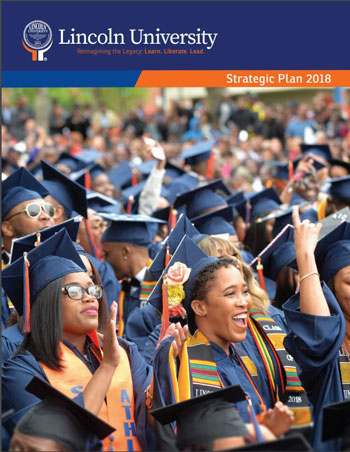- Posted in All University
- Category: Campus News
LINCOLN UNIVERSITY, Pa. – Lincoln University announces its new strategic plan, “Reimagining the Legacy: Learn. Liberate. Lead.” The plan, which has been approved by the Board of Trustees, calls for a focus on student success through reinvestment in the University’s roots as a liberal arts institution.

The plan includes six key areas: the University’s history, the mission & vision, strategic themes, the planning process, the planning context, and strategic opportunities.
“Together, as we implement this plan, we will fortify Lincoln University’s distinctive niche in the world of liberal arts institutions and will garner the resources needed to achieve our educational goals,” said President Brenda A. Allen.
The plan contains a new mission and vision statement:
Mission: Lincoln University, the nation’s first degree-granting Historically Black College and University (HBCU), educates and empowers students to lead their communities and change the world. It does so by: Providing a rigorous liberal arts education featuring active and collaborative learning; Integrating academic and co-curricular programs with the University’s distinctive legacy of global engagement, social responsibility and leadership development; and Cultivating the character, values and standards of excellence needed to enable students to become responsible citizens of a global community.
Vision: Lincoln University will be a national model for both 21st century liberal arts undergraduate education and innovative graduate and professional programs.
This University has already begun to implement the plan, launching a major university restructuring and reorganization effort this summer, adding key staff members to support student success, and creating new partnerships to leverage resources.
The plan is the result of a broadly inclusive, evidence-based process that was designed to honor the past while looking forward to the future. In September 2017, President Allen appointed a Strategic Planning Council, which included faculty, staff, students, alumni, and trustees. Three task forces assisted with collecting and interpreting data to better understand the planning process, planning a large group event to engage the University’s stakeholders, and developing outcome statements and suggesting ways to measure progress toward achieving the mission and vision.
The plan identifies three areas of strategic opportunities: finances and enrollment; curricular and co-curricular; and technology, internal processes, and organizational structures.
The plan is available at http://www.lincoln.edu/strategic-plan.